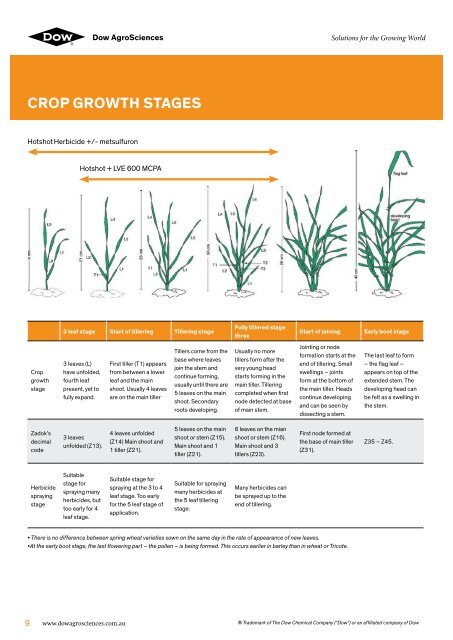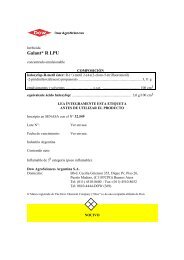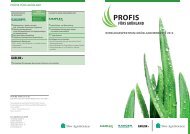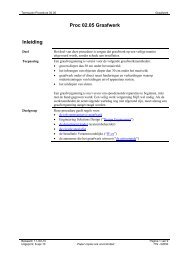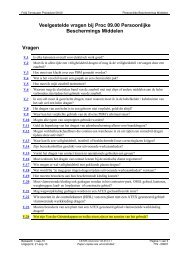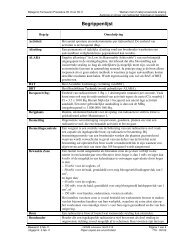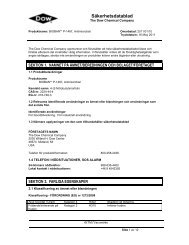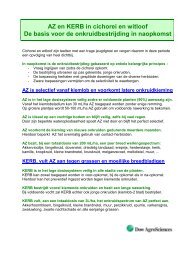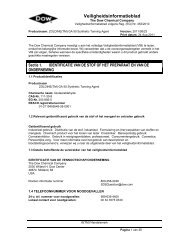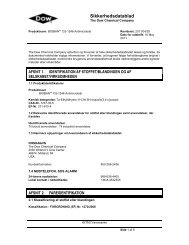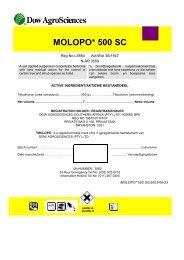Technical Manual - The Dow Chemical Company
Technical Manual - The Dow Chemical Company
Technical Manual - The Dow Chemical Company
You also want an ePaper? Increase the reach of your titles
YUMPU automatically turns print PDFs into web optimized ePapers that Google loves.
9<br />
crOP GrOWTh STaGeS<br />
Hotshot Herbicide +/- metsulfuron<br />
Crop<br />
growth<br />
stage<br />
Zadok’s<br />
decimal<br />
code<br />
Herbicide<br />
spraying<br />
stage<br />
Hotshot + LVE 600 MCPA<br />
3 leaf stage Start of tillering Tillering stage<br />
3 leaves (L)<br />
have unfolded,<br />
fourth leaf<br />
present, yet to<br />
fully expand.<br />
3 leaves<br />
unfolded (Z13).<br />
Suitable<br />
stage for<br />
spraying many<br />
herbicides, but<br />
too early for 4<br />
leaf stage.<br />
www.dowagrosciences.com.au<br />
First tiller (T1) appears<br />
from between a lower<br />
leaf and the main<br />
shoot. Usually 4 leaves<br />
are on the main tiller<br />
4 leaves unfolded<br />
(Z14) Main shoot and<br />
1 tiller (Z21).<br />
Suitable stage for<br />
spraying at the 3 to 4<br />
leaf stage. Too early<br />
for the 5 leaf stage of<br />
application.<br />
Tillers come from the<br />
base where leaves<br />
join the stem and<br />
continue forming,<br />
usually until there are<br />
5 leaves on the main<br />
shoot. Secondary<br />
roots developing.<br />
5 leaves on the main<br />
shoot or stem (Z15).<br />
Main shoot and 1<br />
tiller (Z21).<br />
Suitable for spraying<br />
many herbicides at<br />
the 5 leaf tillering<br />
stage.<br />
fully tillered stage<br />
three<br />
Usually no more<br />
tillers form after the<br />
very young head<br />
starts forming in the<br />
main tiller. Tillering<br />
completed when first<br />
node detected at base<br />
of main stem.<br />
6 leaves on the mian<br />
shoot or stem (Z16).<br />
Main shoot and 3<br />
tillers (Z23).<br />
Many herbicides can<br />
be sprayed up to the<br />
end of tillering.<br />
Start of joining early boot stage<br />
Jointing or node<br />
formation starts at the<br />
end of tillering. Small<br />
swellings – joints<br />
form at the bottom of<br />
the main tiller. Heads<br />
continue developing<br />
and can be seen by<br />
dissecting a stem.<br />
First node formed at<br />
the base of main tiller<br />
(Z31).<br />
• <strong>The</strong>re is no difference between spring wheat varieties sown on the same day in the rate of appearance of new leaves.<br />
•At the early boot stage, the last flowering part – the pollen – is being formed. This occurs earlier in barley than in wheat or Tricote.<br />
<strong>The</strong> last leaf to form<br />
– the flag leaf –<br />
appears on top of the<br />
extended stem. <strong>The</strong><br />
developing head can<br />
be felt as a swelling in<br />
the stem.<br />
Z35 – Z45.<br />
® Trademark of <strong>The</strong> <strong>Dow</strong> <strong>Chemical</strong> <strong>Company</strong> (“<strong>Dow</strong>”) or an affiliated company of <strong>Dow</strong>


